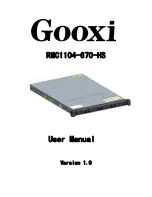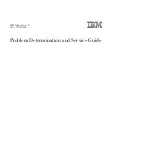
1-2
Cisco ASA Series CLI Configuration Guide
Chapter 1 Configuring Objects
Configuring Objects
Firewall Mode Guidelines
Supported in routed and transparent firewall mode.
IPv6 Guidelines
•
Supports IPv6.
•
The ASA does not support IPv6 nested network object groups, so you cannot group an object with
IPv6 entries under another IPv6 object group.
•
You can mix IPv4 and IPv6 entries in a network object group; you cannot use a mixed object group
for NAT.
Additional Guidelines and Limitations
•
Object must have unique names. While you might want to create a network object group named
“Engineering” and a service object group named “Engineering,” you need to add an identifier (or
“tag”) to the end of at least one object group name to make it unique. For example, you can use the
names “Engineering_admins” and “Engineering_hosts” to make the object group names unique and
to aid in identification.
•
Objects and object groups share the same name space.
•
You cannot remove an object or make an object empty if it is used in a command.
Configuring Objects
•
Configuring Network Objects and Groups, page 1-2
•
Configuring Service Objects and Service Groups, page 1-5
•
Configuring Local User Groups, page 1-11
•
Configuring Security Group Object Groups, page 1-13
•
Configuring Regular Expressions, page 1-14
•
Configuring Time Ranges, page 1-18
Configuring Network Objects and Groups
This section describes how to configure network objects and groups, and it includes the following topics:
•
Configuring a Network Object, page 1-2
•
Configuring a Network Object Group, page 1-3
Configuring a Network Object
A network object can contain a host, a network IP address, or a range of IP addresses, a fully qualified
domain name (FQDN). You can also enable NAT rules on the object (excepting FQDN objects). (See
Chapter 1, “Configuring Network Object NAT,”
for more information.)
Summary of Contents for 5505 - ASA Firewall Edition Bundle
Page 28: ...Glossary GL 24 Cisco ASA Series CLI Configuration Guide ...
Page 61: ...P A R T 1 Getting Started with the ASA ...
Page 62: ......
Page 219: ...P A R T 2 Configuring High Availability and Scalability ...
Page 220: ......
Page 403: ...P A R T 2 Configuring Interfaces ...
Page 404: ......
Page 499: ...P A R T 2 Configuring Basic Settings ...
Page 500: ......
Page 533: ...P A R T 2 Configuring Objects and Access Lists ...
Page 534: ......
Page 601: ...P A R T 2 Configuring IP Routing ...
Page 602: ......
Page 745: ...P A R T 2 Configuring Network Address Translation ...
Page 746: ......
Page 845: ...P A R T 2 Configuring AAA Servers and the Local Database ...
Page 846: ......
Page 981: ...P A R T 2 Configuring Access Control ...
Page 982: ......
Page 1061: ...P A R T 2 Configuring Service Policies Using the Modular Policy Framework ...
Page 1062: ......
Page 1093: ...P A R T 2 Configuring Application Inspection ...
Page 1094: ......
Page 1191: ...P A R T 2 Configuring Unified Communications ...
Page 1192: ......
Page 1333: ...P A R T 2 Configuring Connection Settings and QoS ...
Page 1334: ......
Page 1379: ...P A R T 2 Configuring Advanced Network Protection ...
Page 1380: ......
Page 1475: ...P A R T 2 Configuring Modules ...
Page 1476: ......
Page 1549: ...P A R T 2 Configuring VPN ...
Page 1550: ......
Page 1965: ...P A R T 2 Configuring Logging SNMP and Smart Call Home ...
Page 1966: ......
Page 2059: ...P A R T 2 System Administration ...
Page 2060: ......
Page 2098: ...1 8 Cisco ASA Series CLI Configuration Guide Chapter 1 Troubleshooting Viewing the Coredump ...
Page 2099: ...P A R T 2 Reference ...
Page 2100: ......











































